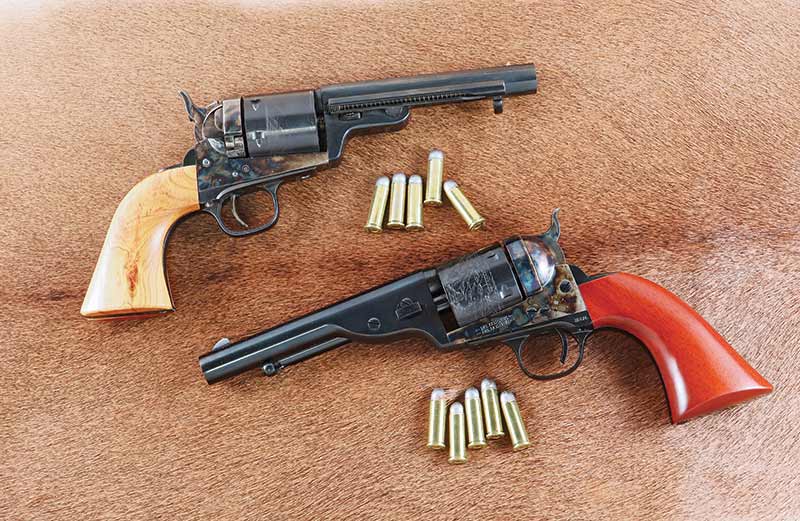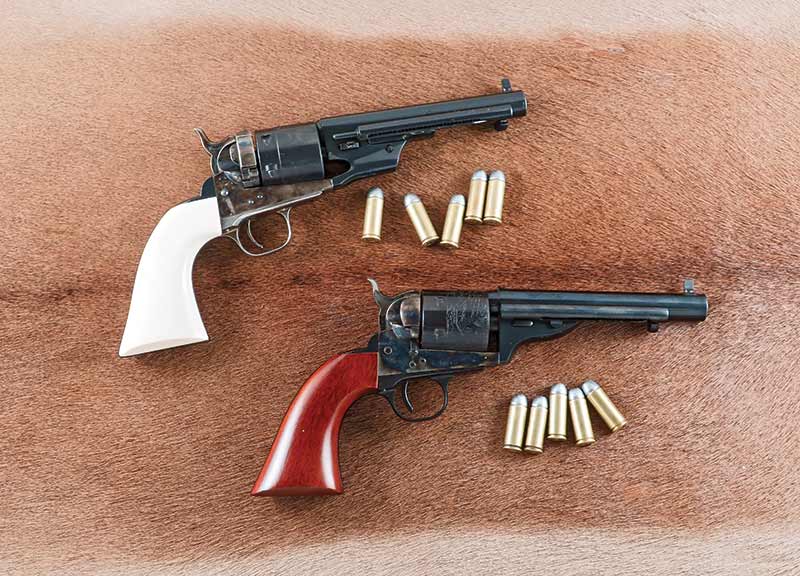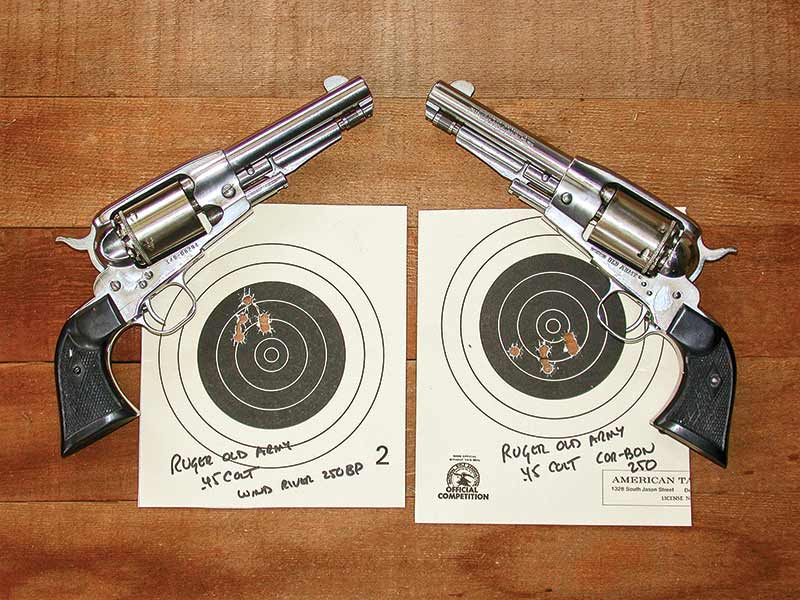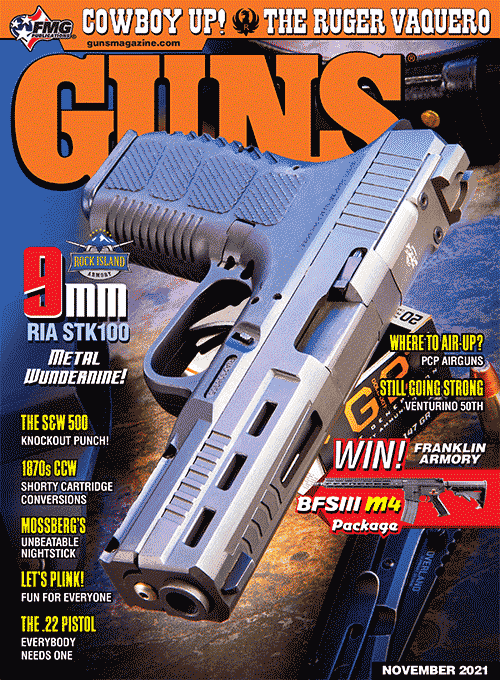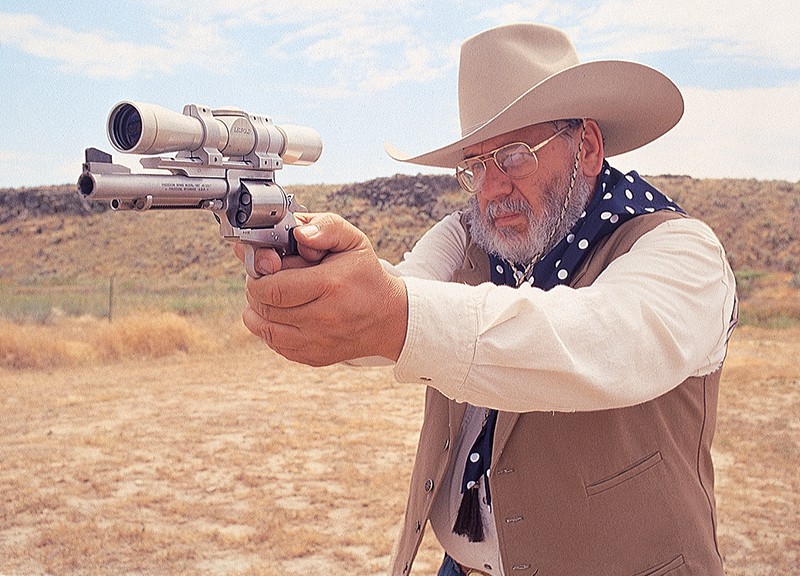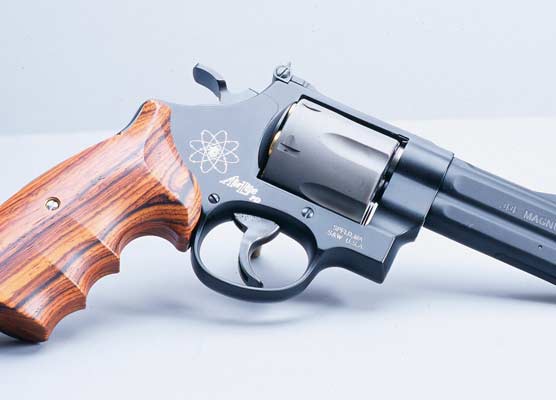Short-Barrel Cartridge Conversions
Concealed Carry Isn't A New Idea
In 1856 Smith & Wesson entered into an agreement with Rollin White who held the patent on revolvers with bored-through cylinders. Around 1857–’58, using White’s patent, Smith & Wesson introduced the Model #1 as the first cartridge-firing revolver. Meanwhile, Sam Colt could have had the Rollin White patent but felt powder, cap and ball would always be preferred.
Due to White’s patent, no one else except Smith & Wesson would be allowed to produce cartridge-firing revolvers until 1869. In 1868 Smith & Wesson entered an agreement with Remington allowing them to convert their percussion pistols to cartridge-firing revolvers using a bored-through cylinder. Sam Colt was now gone but the Colt company was still left out in the cold.
Colt Joins The Fray
Once White’s patent finally ran out, Colt began offering Cartridge Conversions on their basic 1860 Army Model. First came the Richards Conversion in July 1871, followed by the Richards-Mason Conversion in 1872. The latter is easy to distinguish from the former as it has a full-length ejector rod housing running all the way back to the front of the cylinder.
Both of these Colt Cartridge Conversions were built on the cap and ball 1860 Army. The standard barrel lengths for the two Cartridge Conversions were the same for the 1860 Army, namely 8″ while the 1871-72 had a slightly shorter 7-1/2″ barrel. Were shorter barrels offered? The definitive work on Cartridge Conversions is A Study of Colt Conversions and Other Percussion Revolvers by R. Bruce McDowell and on page 283 there is shown a 5-1/2″ 1871-72 Open Top Revolver with well-worn ivory stocks. He says of this picture: “Some Model 1871-1872 Open Top .44s have short barrels such as that pictured. The gun is serial number 4138, has a 5-3/8″ barrel and Army-size ivory grips with steel grip straps. Most of these revolvers were shipped from the factory with a 7-1/2″ barrel, and if shortened, were done so by owners or gunsmiths after they left the factory. Shorter barrels were very popular with lawmen, gunfighters, railroad detectives and others needing to clear leather in a hurry.”
I concur with author McDowell. It is really easy for me to see in my mind’s eye serious sixgunners of that time shortening the barrels of their pistols not only to make them faster into action but also easier to conceal. This revolver mentioned by McDowell is also interesting in that it is not chambered in .44 Colt but has been converted to .44-40. Someone was very serious about a Perfect Packin’ Pistol!
Today
Original short-barreled Cartridge Conversions are hard to find, however, thanks to Cimarron Firearms both the Richards and Richards-Mason Conversions are offered in replica form as well as the 1871-72 Open-Top all with 5-1/2″ barrels. Both 1851 and 1860 versions, so named because of their grip frame, are offered. The former has the grip frame identical to the Single Action Army while the latter is the same as found on the 1860 Army cap and ball revolver. In addition to .44 Russian/.44 Colt/.44 Special and .38 Long Colt/.38 Special in several variations, Cimarron also offers both a .45 Colt and a .45 Schofield chambered version.
Their current catalog shows the 5-1/2″ Richards is available in both .38 Special, which also handles .38 Long Colt and a second version which chambers .44 Special, .44 Colt and .44 Russian. A note here on this chambering — the first Cartridge Conversions and the Open-Top I encountered several years ago were chambered for the .44 Colt. This cartridge has a rim smaller in diameter than found on the Special and Russian. Those cylinders were too small to allow the two latter cartridges to chamber. So, if one wants to shoot all three .44 cartridges, it is necessary to make sure it is a later model with the slightly larger cylinder to accept the rims of the Russian and Special.
Looking at the specifications of 5-1/2″ Richards-Mason replicas we find both versions of the .44 model, with one handling .44 Colt and .44 Russian and another accepting all three. The .44 Special is the longest of the three cartridges and any chambered for this .44 will handle the other two also. It is available as well in .38 Special, .45 Colt and a version dedicated for the .45 Schofield/.45 S&W only.
This brings us to the 1871-72 Open-Top, which in the 5-1/2″ barrel length version can be had in .38 Special, .44 Colt/.44 Russian and .45 Colt. The interesting thing is this model is also available with a 4-3/4″ barrel. All three versions load through a loading gate on the right side and have an ejector rod for removing spent cases just as found on the shortly-to-appear Single Action Army, the first big Colt to have a top strap. Unlike the SAA, the barrel assembly of the Cartridge Conversions and Open-Top are mated to the frame with a wedge pin just as the 1860 Army percussion pistol.
Chamberings can be confusing so it is a good idea to call Cimarron and see exactly what is available and whether the .44 version will handle all three cartridges and if the .45s will accept both the .45 Colt and .45 S&W/Schofield. All of these Cimarron replicas are of excellent quality, nicely fitted and finished and, thanks to Mike Harvey’s diligence, exceptionally authentic.
Other Possibilities
Remington percussion pistols can also be made easily into cartridge revolvers by simply adding conversion cylinders. I had Milt Morrison of Qualite Pistol and Revolver shorten the barrels to 5-1/2″ on a pair of 1858 Remingtons, one in .44 and the other a .36 cap and ball, and once finished it was only necessary to add conversion cylinders. For the former I have excellent Kirst Konverter cartridge conversion cylinders in both .45 Colt and .45 ACP while with the latter Remington uses one cylinder for both .38 Special and .38 Long Colt. If one is a reloader, easy-shooting loads for practice can be made up using .38 Short Colt brass.
There is something that needs to be noted about .38 Conversions. There is no problem with the Richards, Richards-Mason, or 1871-72 Open-Top. However, if a cartridge cylinder is added to a Remington or Colt .36 (so-named by standards at that time by measuring diameter from top of the lands rather than the bottom of the grooves as is customary today), there will be a problem when trying to fire standard loads. Both of these have 0.375″ barrels instead of the normal .38 barrel of 0.357″. The original .38 Colt loads used a heeled bullet smaller at the base to fit into the brass case while the remainder of the bullet was the same diameter as the brass to mate with a barrel. To obtain any accuracy with conventional bullets one needs soft cast hollow base bullets that will expand to fit the rifling of the larger barrels. Hollow base wadcutters will work or Buffalo Arms offers soft cast bullets with hollow bases.
I have several conversion cylinders for the 1858 Remington and 1851 and 1860 Army from both Walt Kirst (KirstKonverter.com) and Taylor’s & Co. R&D conversion cylinders. Most of these conversion cylinders come with a back plate with six firing pins, safety notches between chambers and a locating pin in the back of the cylinder to mate with the corresponding hole in the conversion ring/back plate. Kirst Konverter cylinders are available for a long list of replicas in addition to the Ruger Old Army. There are also conversion kits available to change some replica percussion pistols to .22 sixguns.
The workmanship on both the R&D and Kirst cylinders is excellent. A pair of Ruger Old Army 5-1/2″ percussion pistols of mine were fitted with R&D cylinders several decades ago. Both were a near-perfect fit and this says something about the quality control of both Ruger and R&D. With most .45 Colt loads, and the conversion cylinders in place, both revolvers shoot just slightly below point of aim at 20 yards and these percussion-turned-cartridge-firing sixguns shoot very well.
Final Argument
Having cartridge firing cylinders fitted to percussion revolvers allows a great deal of versatility without adding extra sixguns. When the cartridge era entered in the early 1870s, many sixgunners had their revolvers converted to cartridge firing by adding a new cylinder. The smart ones held onto their old cylinders just in case they found themselves without ammunition. They could still survive by loading their own in the original cylinders. Thanks to the Old Army and a conversion .45 Colt cylinder, this is still not all that bad of an idea today.
Whether for plinkin or packin’, Cartridge Conversions offer a lot of versatility. With the versions I have, I can shoot .38 Short Colt, .38 Long Colt, .38 Special, .44 Colt, .44 Russian, .44 Special, .45 Schofield, .45 Colt and even .45 ACP. That does not leave many bases uncovered.
It has been over 150 years since the first Cartridge Conversions appeared and they only held center stage at Colt from 1871 to 1873 until the Single Action Army appeared. In this day and age with semi-automatic pistols holding 18 or more cartridges, I still find cartridge conversions have a place in my sixgunnin’ life. For concealed carry they may not be anywhere near the upper part of the list of practical options, however, they will still certainly work and especially for traveling off the beaten path. In sagebrush, foothills, forests, or mountains, they will still work just fine while giving us a grand connection to the past.

